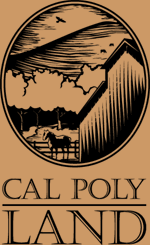Background Information |
|
|
Within the Cal Poly Master Plan it states that high quality agricultural land should be saved for agricultural use. The Sports Complex, however, was built partially on land determined to be Class 1 soils. How did this decision come about? The location chosen for the Sports Complex was the result of extensive research and analysis of different sites within Cal Poly's lands. A team of university officials and specialists examined seven different locations. Because of the predetermined size of the facility, and the need for flat land (most of the other sites were on low-lying prime soils) the current site was chosen. The final location of the Sports Complex was a compromise between protecting prime agricultural soils and maintaining close proximity to the university instructional core. The Sports Complex encompasses 47 acres in total. Only a little over seven of these acres were classified as prime agricultural soils. The seven acres were not in actuality as prime as the soils in other locations. Most of the area and its surrounding had already been disturbed in the thirties with the construction of a landing strip and later a horse track. The soils cleared for the landing strip were pushed onto the surrounding pastures. Only a narrow strip of the original topsoil remained, just above the railroad tracks. The loss was still identified as a class1 impact in the documentation of the Sports Complex planning. A new principal in the Master Plan developed partly due to the action taken of clearing pasture lands for the Sports Complex, it works to minimize the loss of academic assets in the outdoor teaching and learning lands of Cal Poly. Home | Baggett Stadium | Bob Janssen Stadium | Upper Field | Lower Field
|
